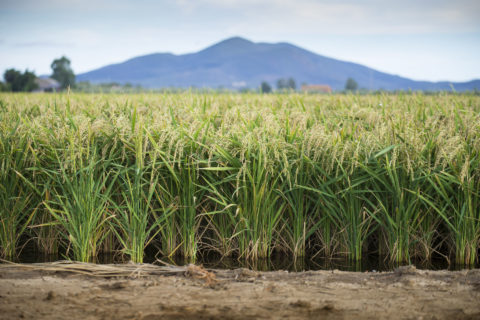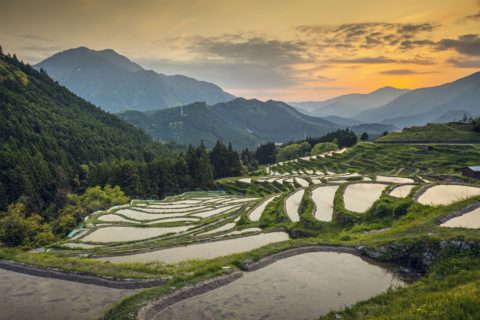By Stephen T. Sinatra, M.D., F.A.C.C., F.A.C.N., C.N.S., C.B.T.
Rice is one of the oldest grains in the world. Research shows that it was cultivated in southern China as early as 8,000 BP (before present) and in India as early as 5,000 BP.
The first record of rice in North America dates back to 1685, when it was grown in the low-lying marshlands of Georgia and the Carolinas. By the mid 1700s, rice farms moved west to the Gulf Coast states of Louisiana, Mississippi, and Texas. To this day, most of the rice grown in the US is still produced in those three states, along with Arkansas, Missouri, and California.
Rice is an important food staple in America and across the world. Here in the US, more than 5,500 rice farmers collectively produce 20 billion pounds of rice every year. The average American eats about 27 pounds per year. Importantly, the industry distributes 40 million pounds of rice annually to combat food insecurity. Without this inexpensive and abundant food source, millions of people would go hungry.

Rice is free of sodium and cholesterol. It is naturally gluten free and the least allergenic of all grains, making it a popular choice for those who have Celiac disease or gluten intolerance. Depending on the type, a single serving of rice may deliver up to 15 vitamins and minerals, including folate, manganese, and magnesium.
But for all these positives, there is one downside—and unfortunately, it’s a big one. Rice is highly contaminated with arsenic.
Arsenic is a toxic trace element naturally present throughout the environment. It is broadly divided into two categories: organic (found in plants and animal tissues) and inorganic (found in rocks, soil, and water). Both are harmful, but inorganic much more so.
While arsenic is found in nearly all foods, it is in miniscule amounts. However, rice is the exception to this rule.
The reason for this is twofold: How and where rice is grown.
The History of Arsenic & Rice

How rice grows plays a big part in why it accumulates so much arsenic.
Unlike other grains and crops, rice is a semi-aquatic plant. It needs constant irrigation to grow, so swampy, flooded land is the perfect environment for it. Because of this, it soaks up a whole lot more arsenic from soil and water than other crops.
Additionally, the rice plant naturally absorbs silicon out of the soil to strengthen its grain. Unfortunately, arsenic is structurally similar to silicon, so it pulls that up as well, in a case of mistaken identity.
Along with naturally-occurring arsenic in soil and water, manmade arsenic-based pesticides are another major source of arsenic in the environment. And much of the problem with arsenic in rice can be blamed on pesticide residues dating back centuries.
Earlier I mentioned that by the mid-1700s, rice farms migrated from the Carolinas to the south-central US region—where much of our domestic rice still grows. This area also has a very long history of producing cotton, a crop that was heavily sprayed with inorganic arsenic-based pesticides to fight the destructive cotton boll weevil. These arsenic residues stick around indefinitely, so even centuries later, this farmland remains tainted, contaminating new crops.
To add insult to injury, inorganic arsenic residues often drain into groundwater, making their way into water supplies used for crop irrigation.
Think organic rice is safer? Well, it does contain fewer pesticides, so it is better in that regard. However, organically grown rice still soaks up arsenic from soil and water like its conventional counterpart. So, in reality, no rice—organic or conventional—is immune from this threat.
Health Effects of Arsenic Exposure
While rice is a huge source of arsenic, it is pervasive in our entire environment. You simply can’t escape it. Remember, it is a naturally occurring element, so tiny amounts are in the air, water, soil, and most foods.
On top of that, it’s still utilized in manufacturing and agriculture. According to the CDC, 90% of all arsenic produced is used to preserve wood (referred to as “pressure treated” wood). And while inorganic arsenic pesticides are no longer allowed in agriculture, organic ones are.
Some organic arsenic compounds are included in animal feed, and elemental arsenic is added to other metals to form alloys in car batteries, LEDs, and electronics.
As usual, the human body has the amazing innate ability to detox arsenic. Through a series of chemical reactions in the body, most arsenic gets excreted (via urine) within a few days. But some (mainly inorganic) can remain for months or longer.
Therein lies the problem. Constant, long-term exposure and/or consumption can eventually cause some serious health issues.
Research has shown that arsenic toxicity can lead to increased risk of:
- Cardiovascular disease and risk factors like high blood pressure
- Skin lesions
- Lung, skin, prostate, and bladder cancer
- Reproductive problems
- Diabetes
- Neurological concerns like poor memory and concentration
Babies—even unborn—are particularly vulnerable. According to one study, “evidence continues to support a role for in utero arsenic exposure in the development of a range of later life diseases.”
In utero exposure has also been linked to higher risk of immune system problems and respiratory infections.
Young children are affected as well, so much so that the advocacy group Healthy Babies Bright Futures now recommends that parents completely avoid feeding babies rice cereal—traditionally one of the first solid foods introduced to infants.
And in June 2021, popular baby food manufacturer Beech Nut not only recalled its infant rice cereal because it exceeded the federal limits for arsenic, they decided to fully discontinue producing it!
How to Reduce Your Risk
Without a doubt, the best way to reduce your exposure to arsenic is to stop eating rice and rice-based products. Some of these include rice flour, brown rice syrup, and rice-based pasta, bread, crackers, and cereal. Read labels—I think you’d be shocked to see rice as a main ingredient in many of the most popular foods!
Of course, avoiding rice altogether isn’t necessarily a realistic solution. A lot of people really like rice. Others, for various reasons, truly rely on it as a main food source. So, here are some ways to continue enjoying rice a little more safely:
Rinse before you cook
You can lower arsenic levels by thoroughly rinsing rice before cooking it with low-arsenic water (generally speaking, non-well water, or filtered/distilled water, should work). Furthermore, some research shows that cooking in a ratio of 6 cups water to 1 cup rice works well to reduce residues.
Enjoy other rice-like grains
Quinoa, millet, and amarynth are delicious, healthy grains that you can use in place of rice in many different dishes. Sure, they don’t replace rice in foods like sushi, but as a side dish or in “rice bowls,” these grains make excellent substitutions.
And if you’re a fan of cauliflower, a healthy, low-carb alternative to traditional rice is riced cauliflower.
Buy California- or internationally-grown
I’m usually all for supporting local farmers or US-grown crops, but rice produced in the southern states is the most dangerous of the bunch. It contains roughly twice as much arsenic as rice from California. So, if buying US-grown, make sure it’s from California. Imported rice from Italy, India, Nepal, and parts of Pakistan tend to contain lower levels of arsenic as well.
Choose white over brown rice
While brown rice has more nutritional value than white, it also has far more arsenic. Of all the different types of white rice, basmati from India, California, and Pakistan appears to be one of the safest choices.
Another type of rice I love is carnaroli, which is sometimes referred to as the “caviar of rice.” Grown in northwest Italy, this short-grain white rice is used to make one of my all-time favorite dishes—risotto.
The problems with traditional rice, coupled with my desire to find the best risotto possible, led me to create my own product: Organic Artichoke Risotto. Not only is it certified organic, I made sure the carnaroli rice gets rigorously tested to ensure arsenic levels are well within acceptable ranges. Luckily, this rice is consistently very low in arsenic and a really healthy option if you’re a rice lover. Even better, this risotto recipe contains several health-promoting vegetables, including artichoke, onion, celery, and carrot.
Folks, the problem of arsenic in rice won’t go away any time soon. It’s a sad example of how environmental mistakes from centuries ago will continue to impact countless future generations. The best you can do is be aware of it and takes steps to limit your exposure, like the ones I’ve discussed here.
References
- Gross BL and Zhao Z. Archaeological and genetic insights into the origins of domesticated rice. Proc Natl Acad Sci U S A. 2014 Apr 29;111(17):6190-7.
- US Rice Federation. History of Rice in the USA.
- Think Rice. US Rice Facts.
- Public Health Statement from CDC and the Agency for Toxic Substances and Disease Registry.
- Karagas M, et al. Rice intake and emerging concerns on arsenic in rice: a review of the human evidence and methodologic challenges. Curr Environ Health Rep. 2019 Dec;6(4):361-72.
- Young Seoub H, et al. Health effects of chronic arsenic exposure. J Prev Med Public Health. 2014 Set;47(5):245-52.
- Farzan S, et al. In utero and early life arsenic exposure in relation to long-term health and disease. Toxicol Appl Pharmacol. 2013 Oct 15;272(2):384-90.
- Farzan S, et al. In utero arsenic exposure and infant infection in a United States cohort: a prospective study. Environ Res. 2013 Oct;126:24-30.
- Arsenic In Infant Rice Cereal. Healthy Babies Bright Futures.
- LaMotte S. Beech-Nut to stop selling baby rice cereal after finding high arsenic levels. CNN. 2021 Jun 9.
- Mihucz V, et al. Arsenic removal from rice by washing and cooking with water. Food Chemistry. 2007;105(4):1718-25.
- Oberst L. Arsenic in rice: how concerned should you be? Food Revolution Network. 2018 Mar 2. Updated 2020 Dec 3.
© Stephen Sinatra and Vervana, LLC. All rights reserved.










